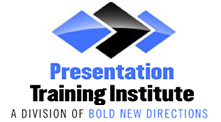Most of us have had to speak in public at some point in our lives and we have been given plenty of advice about it. You have probably been told to keep your hand gestures to a minimum so you don’t distract the audience from listening to your words. However, as soon as you stand up and begin speaking you become increasingly aware of your hands and you have no idea what to do with them. Putting them in your pockets doesn’t seem right so you try to hold them right in front of you which also feels very awkward. As your focus shifts to your hands you begin to feel your well-rehearsed speech draining right out of your brain and you forget everything you had planned to say. The reality is you are not alone. Most speakers have experienced the awkward feeling of what to do with their hands during a presentation. Despite what you may have been told about keeping your hands still, research shows that using your hands can actually better engage the audience. Here are a few strategies for making great use of your hands when speaking in front of a group.
Let your hands describe your words.
Your hand gestures can help you to be more descriptive when you are speaking. They should imitate what you are saying to help you get your point across. For example, if you are talking about something small, pinch your fingers together and if you are expressing something larger, hold your hands farther apart. If you are using a number that is 5 or less you can show that exact number with your fingers. These hand gestures help people to remember what you are saying and they act like a nonverbal highlighter.
Place your hands at your side when you are not using them.
Think of your sides like “home base†and rest your hands at your sides when you are not using them. Holding your hands beside you exudes confidence and also gives your hands a resting place between gestures.
Avoid fidgeting.
You should only use your hands if they are serving a purpose such as describing your words or making a point. Overuse of the hands can become repetitive and can cause your gestures to lose their impact. It can also be distracting for the audience if you are constantly fidgeting with your hands. Avoid placing them in your pockets, behind your back, in front of your groin, and across your chest.
Speak with open palms.
When you are addressing your audience you should try to do so with palms facing up. For example, when you introduce yourself and welcome your audience you should hold out your hands with open palms. This is a nonthreatening hand gesture that lets your audience know that you are on their level and you are speaking to them rather than directing them.
Let your hands showcase your personality.
No one enjoys sitting through a boring presentation, so spice things up a bit by using your hands. While some of your hand gestures should indicate specific information, others can simply be natural movements that add a little personality to your speech. Audiences are much more likely to connect with a speaker that is pointing and moving their hands as opposed to a speaker who keep their hands still throughout the entire presentation. Think of how you would use your hands if you were in a conversation with a friend and use some of these same natural movements in your presentation.
